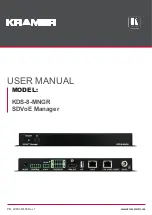
Checkout procedure
This section contains a checkout procedure that you should follow to solve
hardware problems in the server.
About the checkout procedure
Before you perform the checkout procedure for diagnosing hardware problems,
review the following information:
v
Read the safety information that begins on page vii.
v
The diagnostic programs provide the primary methods of testing the major
components of the server, such as the I/O board, Ethernet controller, keyboard,
mouse (pointing device), serial ports, and hard disk drives. You can also use
them to test some external devices. If you are not sure whether a problem is
caused by the hardware or by the software, you can use the diagnostic programs
to confirm that the hardware is working correctly.
v
When you run the diagnostic programs, a single problem might cause more than
one error message. When this happens, correct the cause of the first error
message. The other error messages usually will not occur the next time you run
the diagnostic programs.
Exception:
If multiple error codes or light path diagnostics LEDs indicate a
microprocessor error, the error might be in a microprocessor or in a
microprocessor socket. See “Microprocessor problems” on page 62 for
information about diagnosing microprocessor problems.
v
Before you run the diagnostic programs, you must determine whether the failing
server is part of a shared hard disk drive cluster (two or more servers that share
external storage devices). If it is part of a cluster, you can run all diagnostic
programs except the ones that test the storage unit (that is, a hard disk drive in
the storage unit) or the storage adapter that is attached to the storage unit. The
failing server might be part of a cluster if any of the following conditions is true:
– You have identified the failing server as part of a cluster (two or more servers
that share external storage devices).
– One or more external storage units are attached to the failing server and at
least one of the attached storage units is also attached to another server or
unidentifiable device.
– One or more servers are located near the failing server.
Important:
If the server is part of a shared hard disk drive cluster, run one test
at a time. Do not run any suite of tests, such as “quick” or “normal” tests,
because this might enable the hard disk drive diagnostic tests.
v
If the server is halted and a POST error code is displayed, see “Event logs” on
page 24. If the server is halted and no error message is displayed, see
“System-board jumpers and switches” on page 20 and “Solving undetermined
problems” on page 130.
v
For information about power-supply problems, see “Solving power problems” on
page 128 and “Power-supply LEDs” on page 71.
v
For intermittent problems, check the error log; see “Event logs” on page 24 and
“Diagnostic messages” on page 75.
Chapter 3. Diagnostics
55
Summary of Contents for System x3200 M3
Page 1: ...System x3200 M3 Types 7327 and 7328 Problem Determination and Service Guide...
Page 2: ......
Page 3: ...System x3200 M3 Types 7327 and 7328 Problem Determination and Service Guide...
Page 20: ...xviii System x3200 M3 Types 7327 and 7328 Problem Determination and Service Guide...
Page 42: ...22 System x3200 M3 Types 7327 and 7328 Problem Determination and Service Guide...
Page 160: ...140 System x3200 M3 Types 7327 and 7328 Problem Determination and Service Guide...
Page 240: ...220 System x3200 M3 Types 7327 and 7328 Problem Determination and Service Guide...
Page 264: ...244 System x3200 M3 Types 7327 and 7328 Problem Determination and Service Guide...
Page 280: ...260 System x3200 M3 Types 7327 and 7328 Problem Determination and Service Guide...
Page 281: ......
Page 282: ...Part Number 90Y5683 Printed in USA 1P P N 90Y5683...
















































